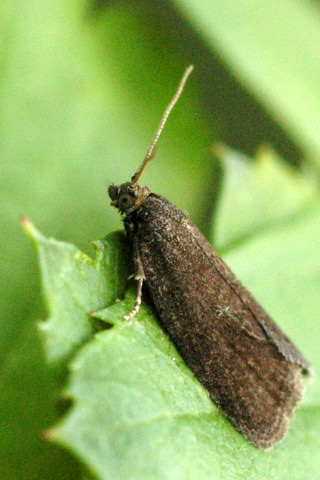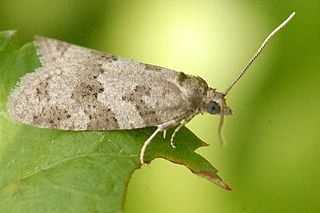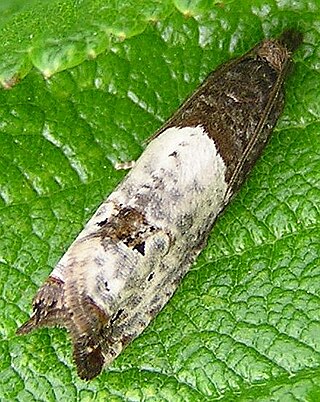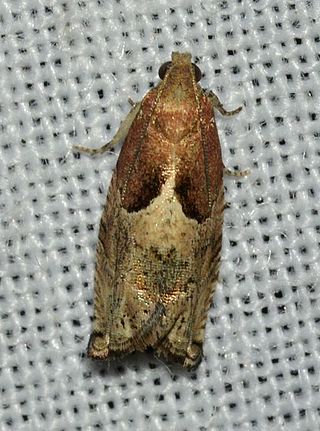Related Research Articles

Pandemis heparana, the dark fruit-tree tortrix or apple brown tortrix, is a moth of the family Tortricidae.

Aphelia viburnana, the bilberry tortrix, is a moth of the family Tortricidae. It is found in Europe, from Portugal and Great Britain to the Ural Mountains, Siberia and Mongolia, further east to the Russian Far East.

Celypha striana is a moth of the family Tortricidae. It is the type species of its genus Celypha.

Cnephasia stephensiana, the grey tortrix, is a moth of the family Tortricidae. It is found in the Palearctic realm, and has also been recorded from Canada.
Paraptila is a genus of moths belonging to the family Tortricidae.

Notocelia roborana is a moth of the family Tortricidae. It is found from Europe to eastern Russia. It is also found in Asia Minor, Iran, Mongolia and China (Xinjiang).

Eupoecilia angustana is a moth of the family Tortricidae. It is found in most of Europe to the southern part of the Urals, and across the Palearctic to China, Japan and Korea.

Pandemis corylana, the chequered fruit-tree tortrix, hazel tortrix moth, filbert tortricid or barred fruit tree moth, is a moth of the family Tortricidae. It is found from northern and central Europe to Siberia, Korea and Japan.

Tortricodes alternella is a species of moth of the family Tortricidae. It is found in most of Europe, except most of the Balkan Peninsula.

Cochylichroa atricapitana, the black-headed conch, is a moth of the family Tortricidae. It is found in China (Xinjiang) and the eastern Palearctic and most of Europe.
Paraptila equadora is a species of moth of the family Tortricidae. It is found in Ecuador in the provinces of Pastaza and Napo).
Syllonoma longipalpana is a species of moth of the family Tortricidae. It is found in the United States in South and North Carolina.
Paraptila argocosma is a species of moth of the family Tortricidae. It is found in Colombia.
Paraptila cornucopis is a species of moth of the family Tortricidae. It is found in Mexico in the Federal District and San Luis Potosí, Colima, and Veracruz.
Paraptila gamma is a species of moth of the family Tortricidae. It is found in Mexico (Tabasco) and Costa Rica.
Paraptila bloomfieldi is a species of moth of the family Tortricidae. It is found along the western coast of central Mexico
Paraptila pseudogamma is a species of moth of the family Tortricidae. It is found in El Salvador.
Paraptila symmetricana is a species of moth of the family Tortricidae. It is found in Bolivia.

Falseuncaria ruficiliana, the red-fringed conch, is a species of moth of the family Tortricidae. It is found in China (Xinjiang) and most of Europe. The habitat consists of limestone, heathland and moorland.

Gypsonoma salicicolana is a species of moth of the family Tortricidae. It is found in North America, where it has been recorded from Quebec to Florida, west through Texas to California and north to Alberta.
References
- ↑ tortricidae.com
- ↑ Brown, J.W. 1990: Systematic revision of Paraptila Meyrick (Tortricidae). Journal of the Lepidopterist's Society44 (4): 257-262. Full article: [ permanent dead link ]